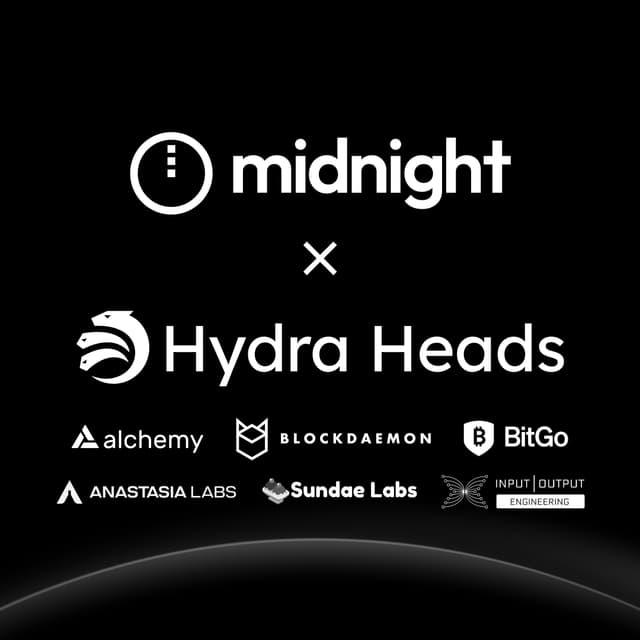Glacier Drop is a multi-phase, multi-billion token distribution for the Midnight network. Processing hundreds of thousands of potential claims directly on the Cardano mainnet would create network congestion and increase costs for participants. A more efficient solution is required to manage the high transaction volume while ensuring a smooth experience for users.
To achieve this, the distribution process uses Hydra, a Layer 2 scaling protocol designed to operate on top of the Cardano blockchain. Hydra allows a group of participants to open a secure, off-chain environment known as a Head. Within a Head, transactions are processed at high speed before the final, consolidated results are settled on the main network. This approach significantly increases throughput and reduces latency.
This model provides a fast and low-cost claims process, but its security and reliability depend on the operators running the Head. This article introduces the strategic ecosystem partners operating Hydra Heads. To learn more about the underlying technology, read the full explainer on using Hydra to scale the Glacier Drop.
The strategic ecosystem partners operating Hydra Heads
For Glacier Drop, each Hydra Head is operated by a set of independent infrastructure operators. Together, these operators run a Head that validates claims, reach consensus on their validity, and post the final outcomes (NIGHT redemption contracts) to the Cardano blockchain. Before any transaction is recorded on the blockchain, all nodes must reach consensus, ensuring decentralization and security.
The selection of these ecosystem partners is strategic, with each organization contributing distinct and complementary capabilities.
- Alchemy, a leading blockchain development platform, brings its focus on providing developers with foundational tools and infrastructure. Its role as a partner validates the Hydra deployment as a stable and robust foundation upon which future developers can build decentralized applications.
- Anastasia Labs is a blockchain software consultancy that provides enterprise-grade engineering and reliability. Its participation helps diversify the operator base beyond incumbent organizations, showing that Hydra can be adopted and run effectively by independent technical specialists.
- BitGo, an institutional qualified custodian, operates one of the nodes and its participation provides a high degree of security and assurance. This dual role demonstrates that the Hydra protocol meets the stringent standards required for institutional-grade applications.
- Blockdaemon secures $110B+ in digital assets and provides institutional-grade blockchain infrastructure for world-leading financial institutions. It will contribute its extensive experience in operating secure and scalable nodes to ensure Hydra deployment is managed with a high degree of operational security and reliability.
- Input Output Engineering (IOE), the original architect of the protocol, ensures the deployment aligns with Hydra’s core design and research principles. Their direct involvement bridges the gap between academic theory and production-grade implementation, validating that the technology functions as intended at a critical moment of ecosystem adoption.
- SundaeLabs brings extensive expertise from across the ecosystem including open-source Hydra contributions and the world’s first Hydra smart contract demo. Their involvement ensures the Hydra implementation is aligned with the demands of transaction-heavy use cases.
For a detailed example of how smart contracts run on Hydra and learn how additional Hydra heads can scale up to meet increased demand.
A collaborative model for scalable infrastructure
Together, the partners create a balanced and resilient operator set for processing claims at scale during Glacier Drop.
The direct implications of this model extend to every part of the ecosystem. For community participants, the result is a faster, cheaper, and more reliable claim process. For developers, it offers a practical demonstration that Hydra can be integrated into production applications, moving it from an academic concept to a production-grade L2. Furthermore, for institutions, the active involvement of these ecosystem partners provides crucial validation that Hydra’s architecture is secure enough for high-value operations.
Ultimately, Glacier Drop functions as a large-scale, real-world use of Hydra’s capacity to handle high transaction volumes and validating its readiness for complex applications. It establishes a functional precedent for how high-throughput use cases, from decentralized finance to institutional services, can operate at scale, with the Midnight network serving as a customer and catalyst for this next generation of infrastructure.
Learn more about the ecosystem partners in the Midnight ecosystem catalog.

